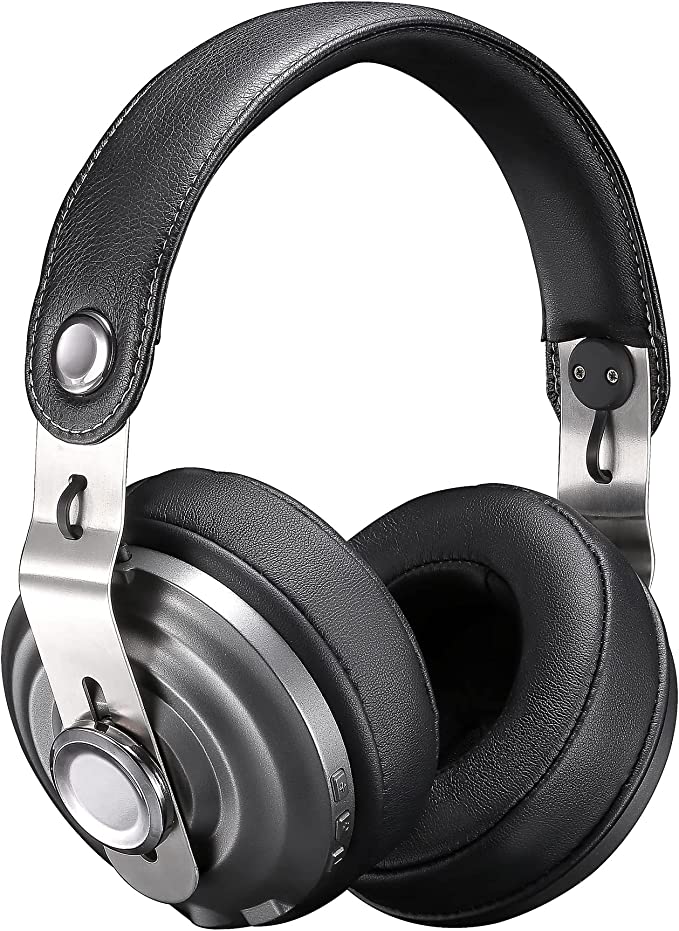The Science of Synchronization: Deconstructing Cross-Platform Audio with the KOFIRE UT-01
Update on Nov. 22, 2025, 3:59 p.m.
In the high-stakes world of competitive gaming, visual fidelity often steals the spotlight. Yet, any seasoned player knows that audio is the silent arbiter of victory. The ability to pinpoint a footstep, gauge the distance of gunfire, or communicate clearly with a squad is often what separates the winner from the respawn screen.
However, the modern gaming landscape is fragmented. A player might switch from a Nintendo Switch on the commute to a PS5 on the couch, and finally to a PC for competitive play. The KOFIRE UT-01 Wireless Gaming Headset presents itself not merely as an accessory, but as a unifying architectural solution to this fragmentation. By analyzing its engineering—specifically its dual-wireless modes and driver physics—we can understand how it solves the perennial problems of latency and compatibility.

The Latency Battle: 2.4GHz RF vs. Bluetooth
The most critical specification in gaming audio is latency—the time delay between an event happening on screen and the sound reaching your ear. In fast-paced shooters, a delay of even 100 milliseconds can feel like lag, causing a disconnect between hand-eye-ear coordination.
The UT-01 addresses this through a dual-mode wireless architecture. While it supports Bluetooth, which is convenient for connecting to phones, its primary weapon is the 2.4GHz RF (Radio Frequency) connection via a dedicated USB-C dongle.
- Bluetooth Physics: Bluetooth is a “polite” protocol. It spends time negotiating connections, hopping frequencies to avoid interference, and compressing audio to save bandwidth. This overhead creates inherent latency, often 100ms or more.
- 2.4GHz RF Physics: The dedicated dongle creates a private, direct pipeline. It doesn’t need to negotiate with the host device’s operating system in the same way. It transmits uncompressed or lightly compressed audio data in a continuous stream. This results in ultra-low latency (often under 20-30ms), which the human brain perceives as instantaneous.
For Nintendo Switch users, this is a game-changer. While the Switch recently enabled Bluetooth audio, the native latency is often noticeable. Plugging the UT-01’s USB-C dongle directly into the Switch’s port bypasses the console’s internal Bluetooth stack, delivering wired-like synchronization wirelessly.

Acoustic Immersion: The Physics of 50mm Drivers
Inside the ear cups, the UT-01 houses 50mm dynamic drivers. In the realm of headphones, size often correlates with specific acoustic characteristics. Standard headphones typically use 40mm drivers. By increasing the diameter to 50mm, engineers alter the physics of air displacement.
- Surface Area: A larger diaphragm can move a greater volume of air with less excursion (movement distance). This is crucial for reproducing low-frequency sounds—explosions, engine roars, and the deep thrum of ambient soundtracks—without distortion.
- Soundstage: Larger drivers can also contribute to a perceived wider soundstage. In gaming, “imaging” (knowing where a sound is coming from) is vital. The physical size of the 50mm driver creates a wavefront that interacts with the outer ear in a way that can enhance spatial perception, making virtual surround sound algorithms more effective.
While audiophiles might prefer a flatter response, gaming headsets like the UT-01 are typically tuned with a specific EQ curve that boosts sub-bass for immersion and upper-mids for footstep clarity.

The Universal Translator: The Dongle Ecosystem
The engineering brilliance of the UT-01 lies in its USB-C Dongle with USB-A Adapter. This simple hardware choice solves the compatibility puzzle.
- Handheld Mode: The USB-C transceiver plugs directly into the bottom of a Nintendo Switch or a modern Android phone/tablet.
- Docked/Desktop Mode: By attaching the USB-A adapter, the same transceiver plugs into a PS5 console, a PS4, or a PC tower.
This “hardware-based” compatibility is superior to software solutions because it requires no drivers. The host device simply sees a generic USB audio device and outputs sound immediately. It effectively “tricks” the console into outputting high-quality wireless audio without proprietary licensing hurdles.

Tactical Communication: The Detachable Cardioid Mic
Communication is the backbone of team strategy. The UT-01 features a detachable microphone with a cardioid pickup pattern.
- Directional Physics: A cardioid pattern is shaped like a heart. It is highly sensitive to sound coming from directly in front (the user’s mouth) and actively rejects sound from the rear and sides. In a gaming environment, this physically filters out the click-clack of a mechanical keyboard or the sound of the game audio leaking from the ear cups.
- Modularity: The ability to physically remove the microphone boom when playing solo adventures is an ergonomic nod to the user. It transforms the headset from a communication tool into a pair of dedicated headphones, reducing weight and visual clutter.
Endurance Engineering: Battery and Build
Wireless freedom is defined by battery life. The UT-01 integrates a high-density lithium battery capable of 30+ hours of operation. This is achieved not just through battery size, but through the power efficiency of the 2.4GHz protocol, which enters sleep modes aggressively when no audio is detected.
The Over-Ear design utilizes memory foam pads. Beyond comfort, these pads provide passive noise isolation. By creating a physical seal around the ear, they lower the noise floor of the room, allowing the gamer to hear subtle in-game cues without cranking the volume to dangerous levels.

Conclusion: A Unifying Tool for the Modern Gamer
The KOFIRE UT-01 is not trying to be a studio reference headphone. It is a purpose-built tool for the multi-platform gamer. It recognizes that the modern player does not live on just one island; they migrate between Switch, PC, and PlayStation.
By prioritizing 2.4GHz low-latency transmission and leveraging the physics of 50mm drivers, it bridges the gap between these islands. It offers a scientifically sound solution to the problem of wireless lag, ensuring that your reaction time is limited only by your reflexes, not your hardware.































